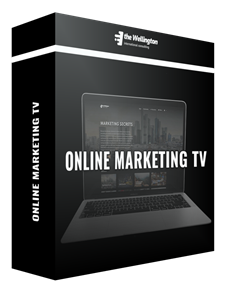A/B Testing Your Funnel: How to Increase Conversions with Data
Introduction
In today’s competitive digital landscape, businesses must optimize their marketing funnels to maximize conversions. One of the most effective ways to do this is through A/B testing, also known as split testing. A/B testing allows marketers to compare two variations of a funnel component to determine which performs better, making data-driven decisions that improve customer experience and drive revenue. In this article, we will explore how to conduct A/B testing effectively to increase conversions at every stage of your funnel.
1. Understanding A/B Testing in Funnel Marketing
A/B testing involves creating two different versions of an element within your marketing funnel and testing them against each other with a sample audience. The goal is to identify which variation results in higher engagement, click-through rates (CTR), or conversions.
Funnel marketing consists of several stages: Awareness, Consideration, Decision, and Retention. A/B testing can be applied at each stage to refine messaging, optimize user experience, and enhance conversion rates. Even small tweaks can lead to significant improvements over time.
Why A/B Testing Matters
A/B testing helps businesses make informed decisions instead of relying on assumptions. By analyzing real user behavior, marketers can:
- Reduce bounce rates
- Improve customer experience
- Increase engagement and retention
- Maximize return on investment (ROI)
2. Key Elements to A/B Test in Your Funnel
To maximize the effectiveness of your marketing funnel, consider A/B testing the following elements:
Landing Pages
- Headlines: Test different wording, length, and tone.
- Call-to-Action (CTA): Experiment with button color, size, and text.
- Layout & Design: Try variations in structure, images, and white space.
- Lead Forms: Adjust the number of fields and placement.
- Social Proof: Test customer reviews, trust badges, and media mentions.
Email Sequences
- Subject Lines: A/B test different lengths, emojis, and power words.
- Email Copy: Compare short vs. long-form emails.
- Send Timing: Test different days and times to optimize open rates.
- Personalization: Assess how using names and customized offers affects engagement.
- CTA Placement: Test different positions and button styles in emails.
Ad Campaigns
- Visuals: Compare static images vs. videos.
- Copywriting: Test emotional vs. logical messaging.
- Targeting: Experiment with audience segments and demographics.
- Platforms: Compare ad performance on Facebook, Google, LinkedIn, etc.
- Ad Format: Test carousel ads vs. single image ads.
Checkout Process
- Pricing Display: Show price upfront vs. after engagement.
- Testimonials: Test different customer reviews or case studies.
- Payment Options: Evaluate different payment methods and installment plans.
- Security Badges: Assess the impact of trust symbols on conversions.
- One-Click Checkout: Compare multi-step vs. single-click purchases.
3. Setting Up a Successful A/B Test
To ensure meaningful results, follow these steps:
- Define Clear Objectives: Identify what you want to improve (e.g., increase sign-ups by 10%).
- Test One Variable at a Time: Avoid multiple changes simultaneously to ensure accurate data interpretation.
- Split Your Audience Randomly: Use tools like Google Optimize, Optimizely, or HubSpot to ensure even distribution.
- Run the Test for a Sufficient Duration: Give your test enough time to collect statistically significant data.
- Measure Statistical Significance: Ensure your results are reliable and not due to random chance.
- Document Learnings: Keep track of what worked and why to refine future tests.
4. Analyzing the Data & Implementing Changes
After collecting test results, analyze key performance indicators (KPIs) such as:
- Conversion Rate: The percentage of users who complete the desired action.
- Click-Through Rate (CTR): The number of users who clicked on your CTA.
- Bounce Rate: The percentage of visitors who leave without engaging.
- Engagement Metrics: Time on page, scroll depth, and interactions.
- Customer Lifetime Value (CLV): Determine the long-term impact of changes.
Ensure that your results are statistically significant before making changes. Once you have a winner, implement the changes and continue testing new elements for further optimization.
5. Real-World Examples of Successful A/B Tests
Example 1: E-commerce Landing Page Optimization
An online store tested two versions of a product page: one with a red CTA button and another with a green one. The red button resulted in a 15% increase in conversions.
Example 2: SaaS Email Campaign Improvement
A software company tested two subject lines in an email campaign. The version with a question-based subject line saw a 22% higher open rate compared to the straightforward statement.
Example 3: Checkout Process Enhancement
A travel booking site reduced the number of checkout steps from five to three, leading to a 30% increase in completed bookings.
Example 4: Blog Content Performance Boost
A content marketing agency tested two different blog post titles. The version with a number and a power word (“10 Proven Ways to Increase Traffic”) saw a 40% boost in click-through rates compared to the generic version.
Example 5: Mobile vs. Desktop User Experience
An online subscription service tested a mobile-optimized checkout page against a standard desktop-first design. The mobile-friendly version increased mobile conversions by 25%.
6. Recommended A/B Testing Tools
To streamline your A/B testing efforts, consider using these tools:
- Google Optimize – Free and integrates with Google Analytics for website testing.
- Optimizely – Advanced testing capabilities with AI-driven insights.
- VWO (Visual Website Optimizer) – Offers heatmaps and user session recordings.
- Unbounce – Ideal for testing landing pages and lead generation forms.
- Crazy Egg – Provides visual heatmaps to understand user interactions.
- Convert – Enterprise-grade A/B testing with personalization features.
- Hotjar – Offers user behavior insights through heatmaps and session recordings.
- Kissmetrics – Tracks and analyzes customer behavior over time.
- AB Tasty – Provides AI-powered testing and conversion rate optimization tools.
7. Common Mistakes to Avoid in A/B Testing
- Ending Tests Too Early: Allow enough time to collect meaningful data.
- Testing Too Many Variables at Once: Focus on one change per test.
- Ignoring Qualitative Data: Use heatmaps and user feedback in conjunction with test results.
- Not Segmenting Audiences: Different user segments may respond differently to changes.
- Failing to Iterate: A/B testing should be a continuous process, not a one-time fix.
Conclusion
A/B testing is a powerful tool for optimizing your marketing funnel and increasing conversions. By systematically testing different elements, analyzing data, and making iterative improvements, businesses can make data-driven decisions that lead to better customer experiences and higher revenue. Start A/B testing today and unlock the full potential of your marketing funnel!
By implementing a structured and continuous approach to A/B testing, you can stay ahead of the competition and ensure your marketing efforts are always optimized for maximum impact. Keep testing, keep learning, and keep growing!
ABOUT THE AUTHOR

Justin P. Sikitiko
Justin Sikitiko is an expert in online marketing and has already built up numerous projects in which he has proven his knowledge. For OMTV, he sheds light on various business ideas, introduces entrepreneurs and inspires people to earn money online.
JOIN OMTV TODAY!
OMTV is a video-on-demand platform focused on achieving success in digital marketing. Learn how to make money solely through the internet.
Test OMTV for just $1 – full access, no risk.


